Abstract
Successful injury control measures (stoplights, sprinkler systems, electrical insulation, evacuation) have long been commonplace. However, progress in injury control has been hampered by the failure to recognize that injuries cannot occur without the action of specific agents analogous to those of the infectious diseases and likewise transmitted by vehicles and vectors. These agents are the several forms of injury. Varying and interacting with the characteristics of the host and the environment, they constitute the classic epidemiologic triads that determine injury distributions, none of which are random. The injury-disease dichotomy, a universal in most of the world's major languages, may have resulted from the fact that at least some of the causes of injuries (for example, wild animals or falling trees) are more identifiable and proximate than the causes of diseases. The etiology of injuries suggests that for epidemiologic and public health purposes, the term injury should probably be defined so as to encompass those kinds of damage to the body that are produced by energy exchanges and that are manifested within 48 hours, or usually within considerably shorter periods. Strategies for injury control can be extended to the control of other pathological conditions. The active-passive distinction (the dimension expressing the extent to which control measures require people to do something) has a direct bearing on the success of public health programs, because passive approaches have historically had a far better record of success than active ones. Ten basic strategies have been identified that provide options for reducing the damage to people (and property) caused by all kinds of environmental hazards.
Full text
PDF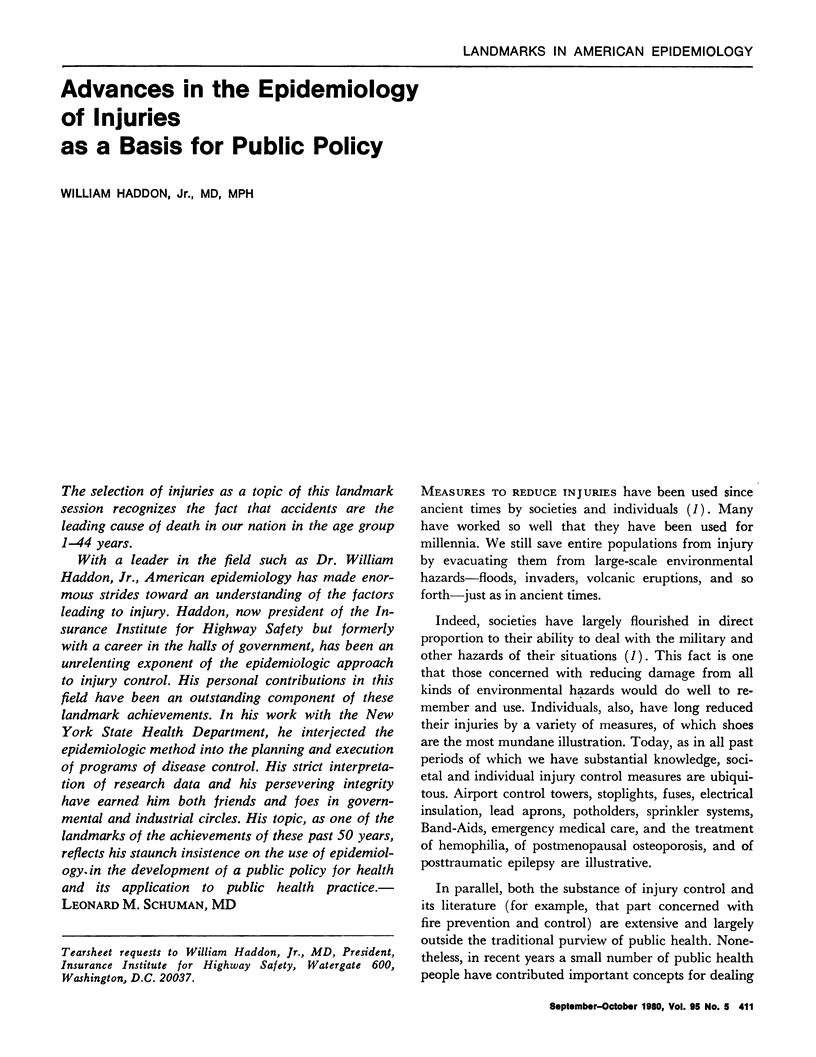
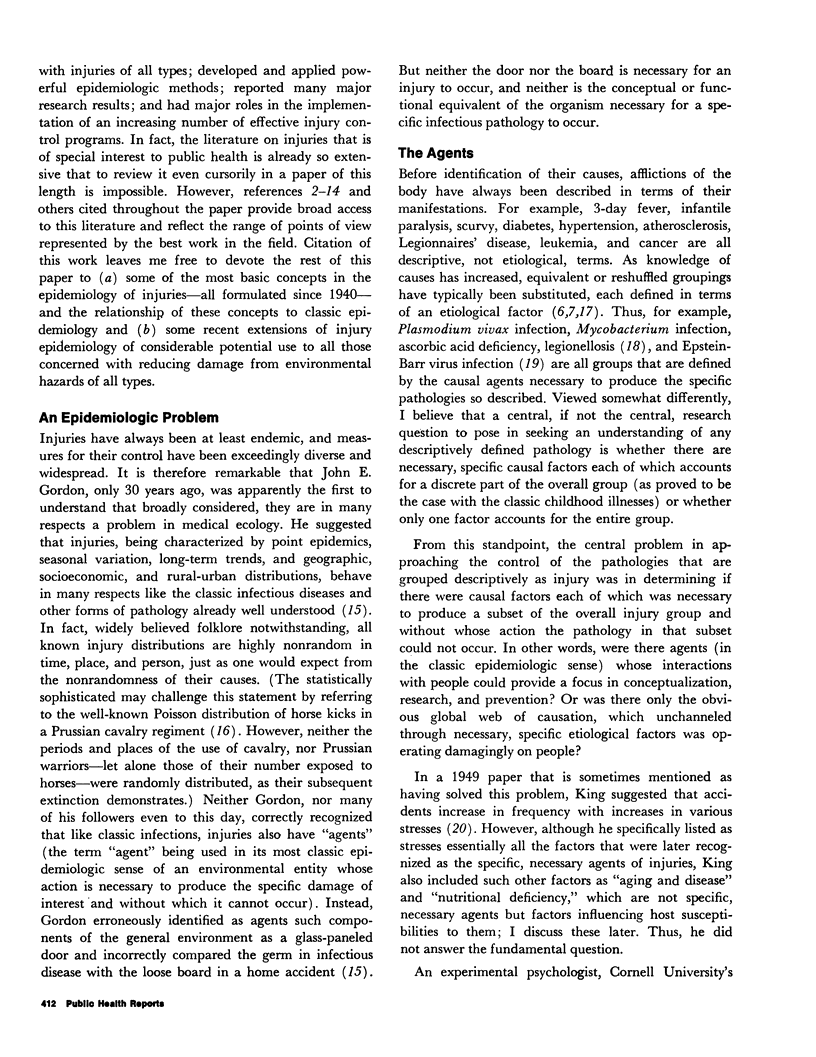
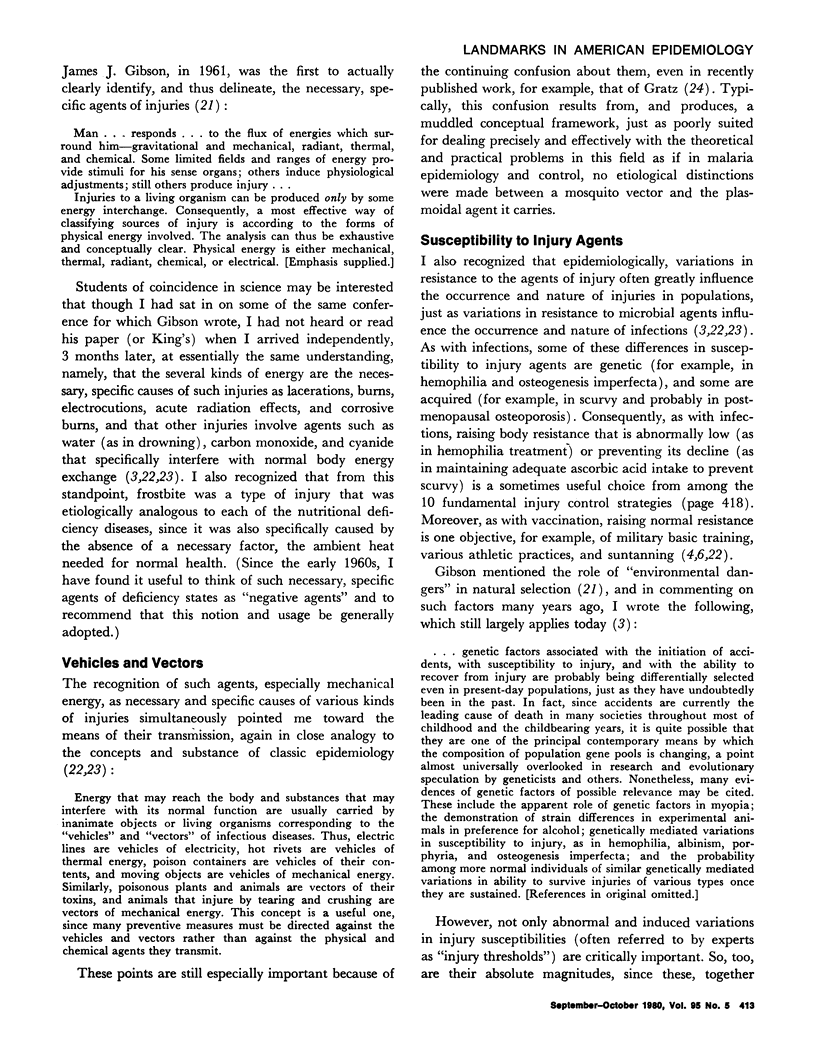
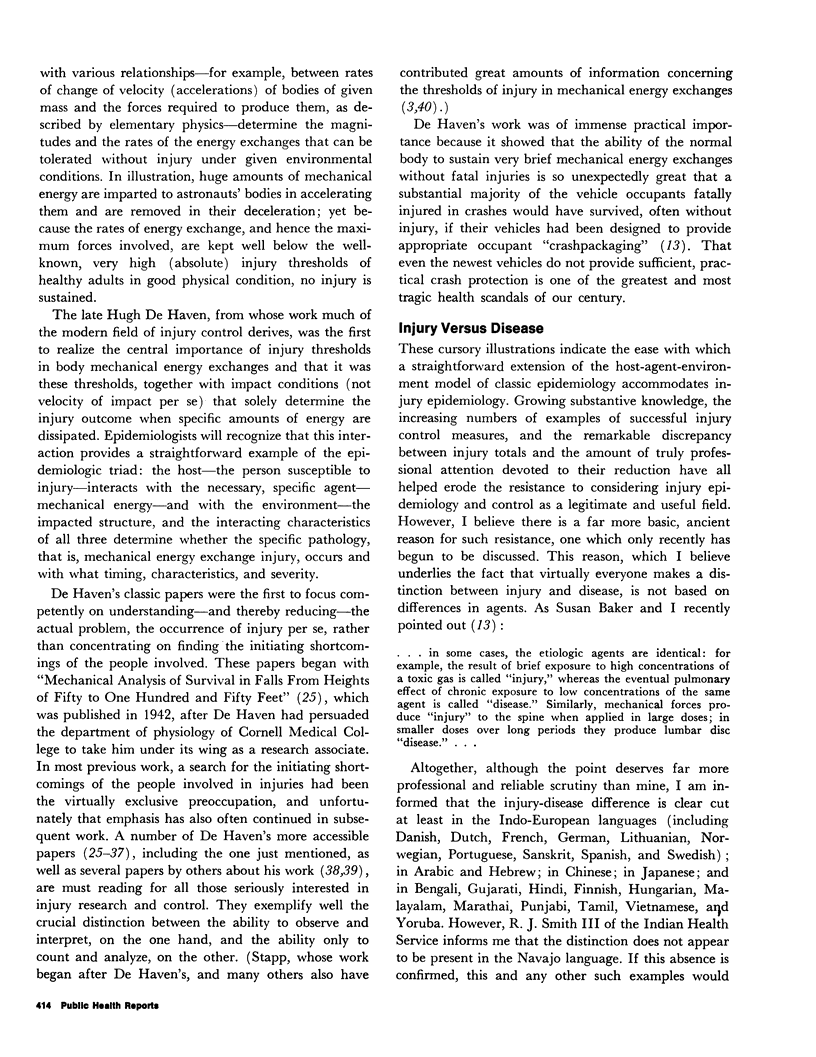
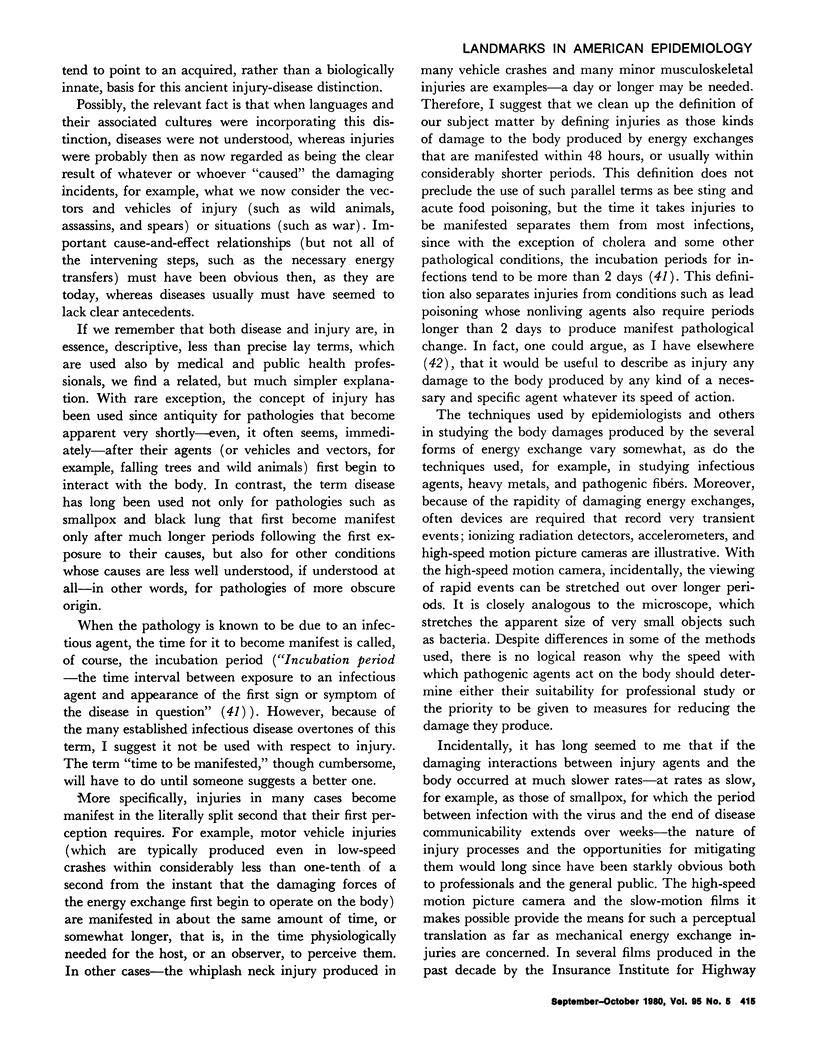
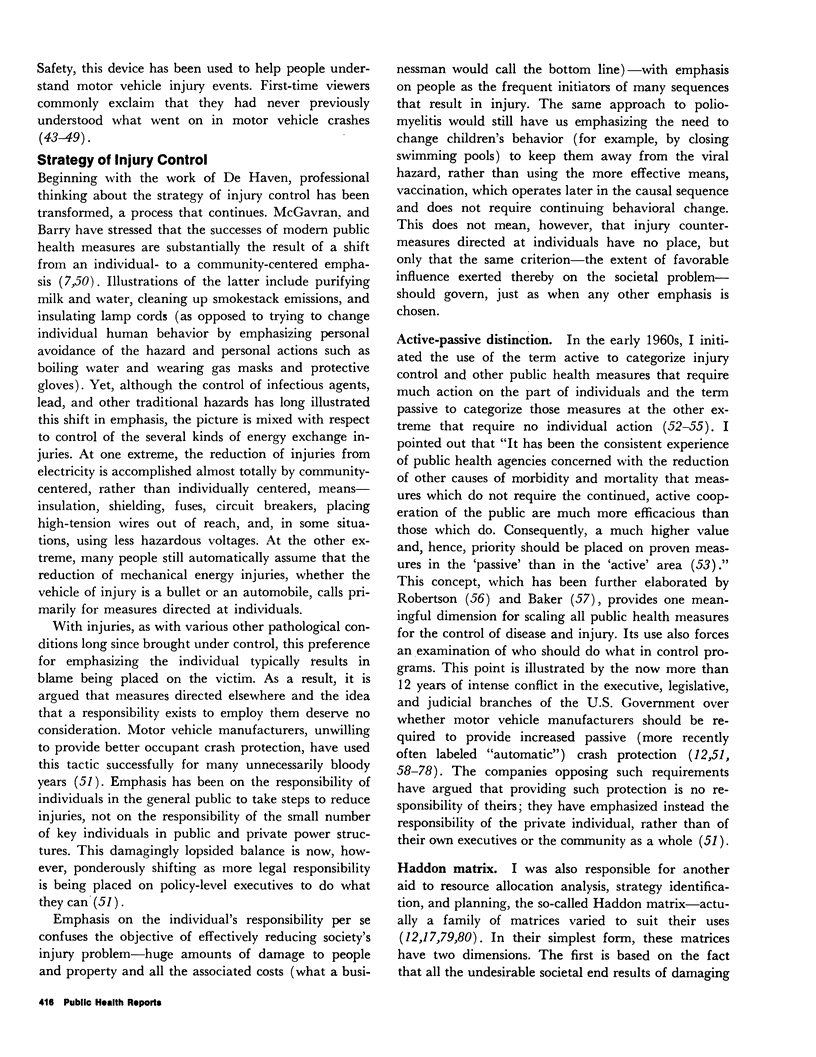
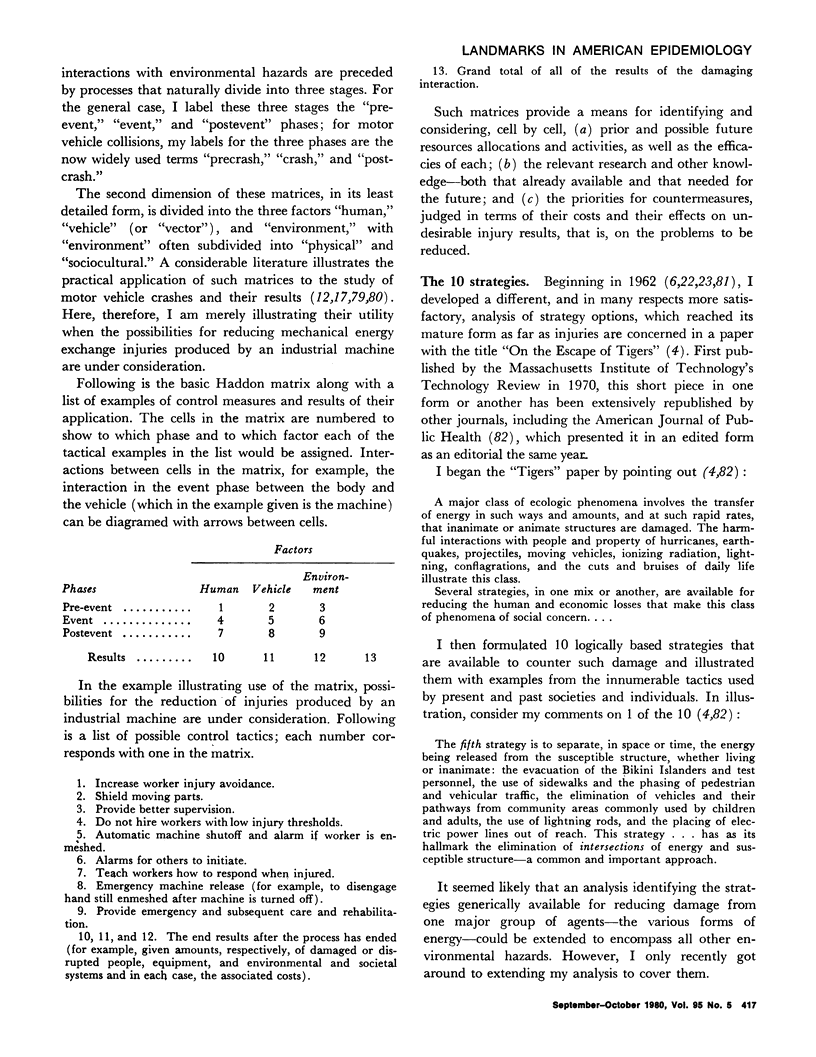
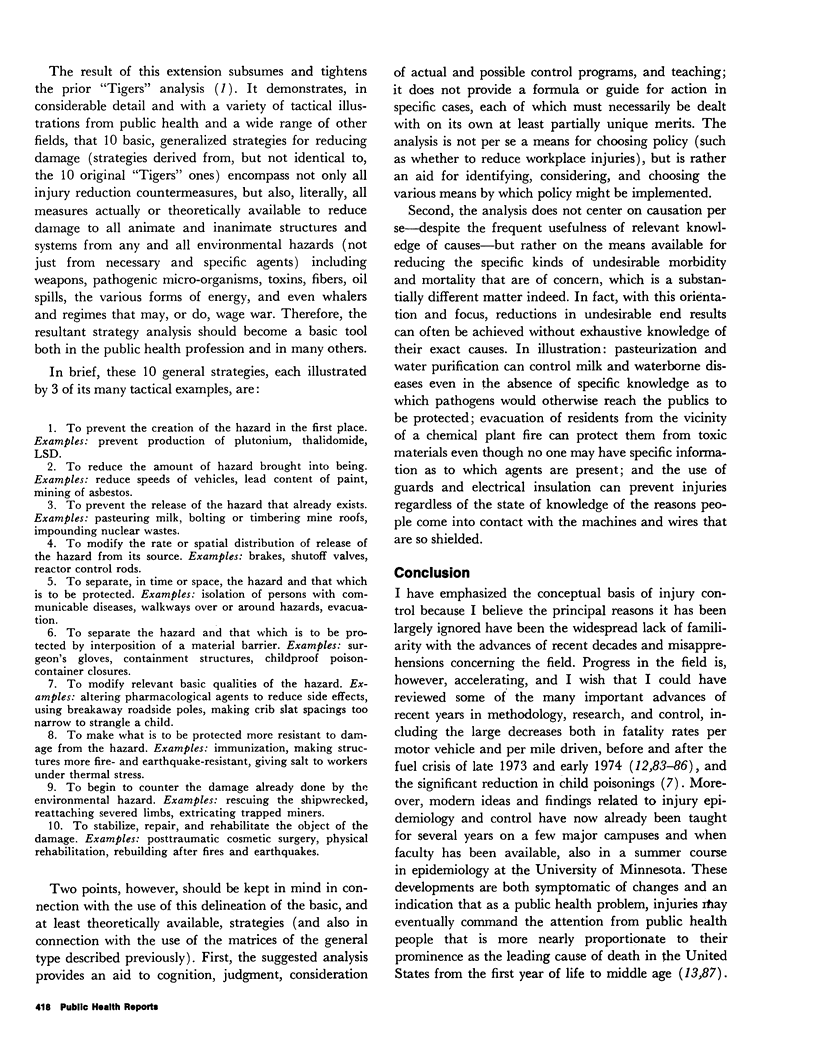
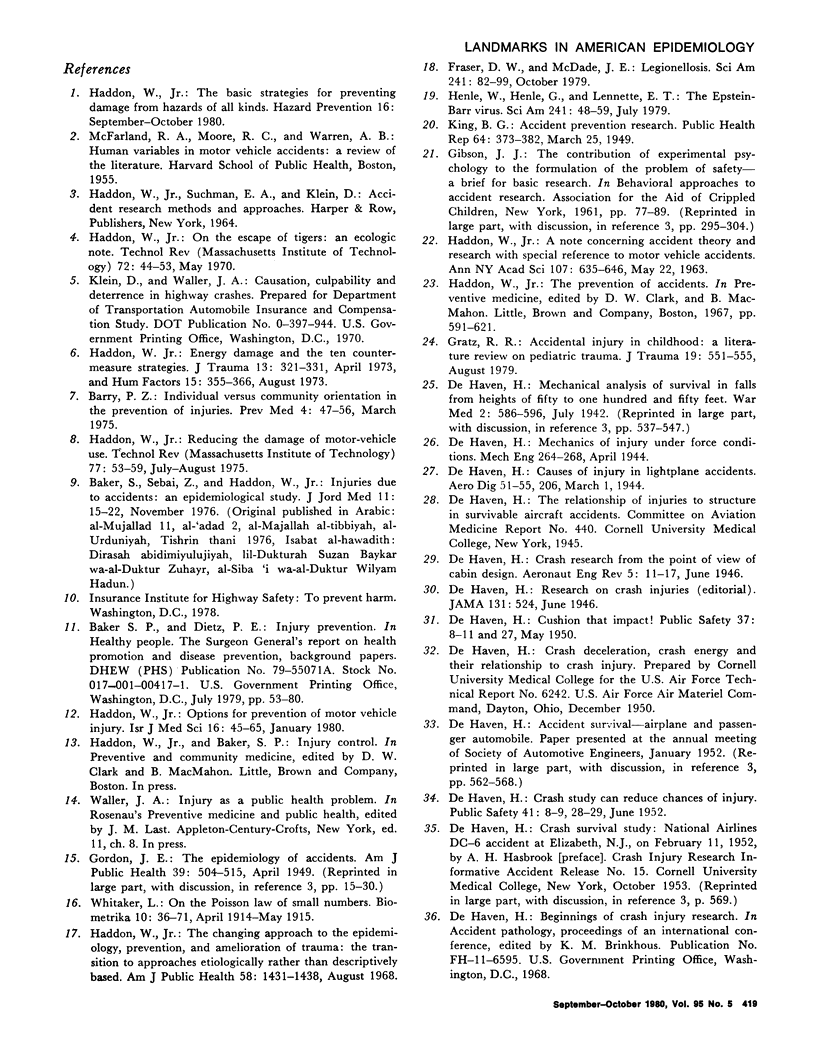
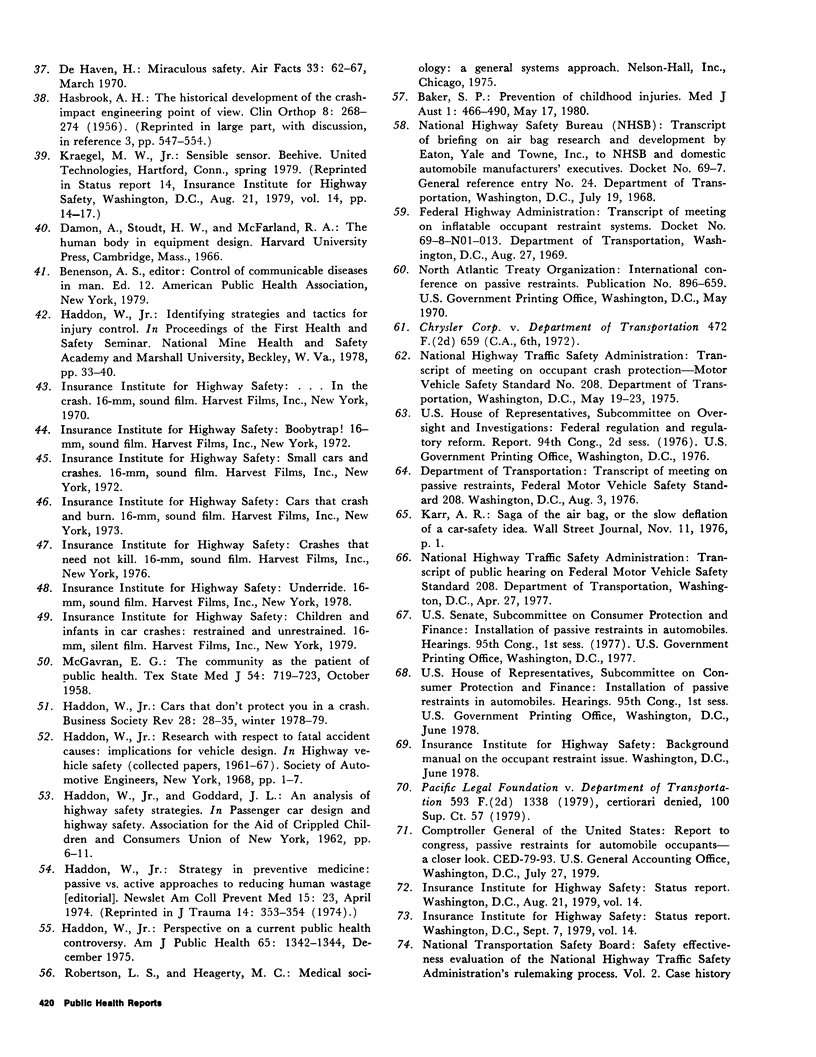
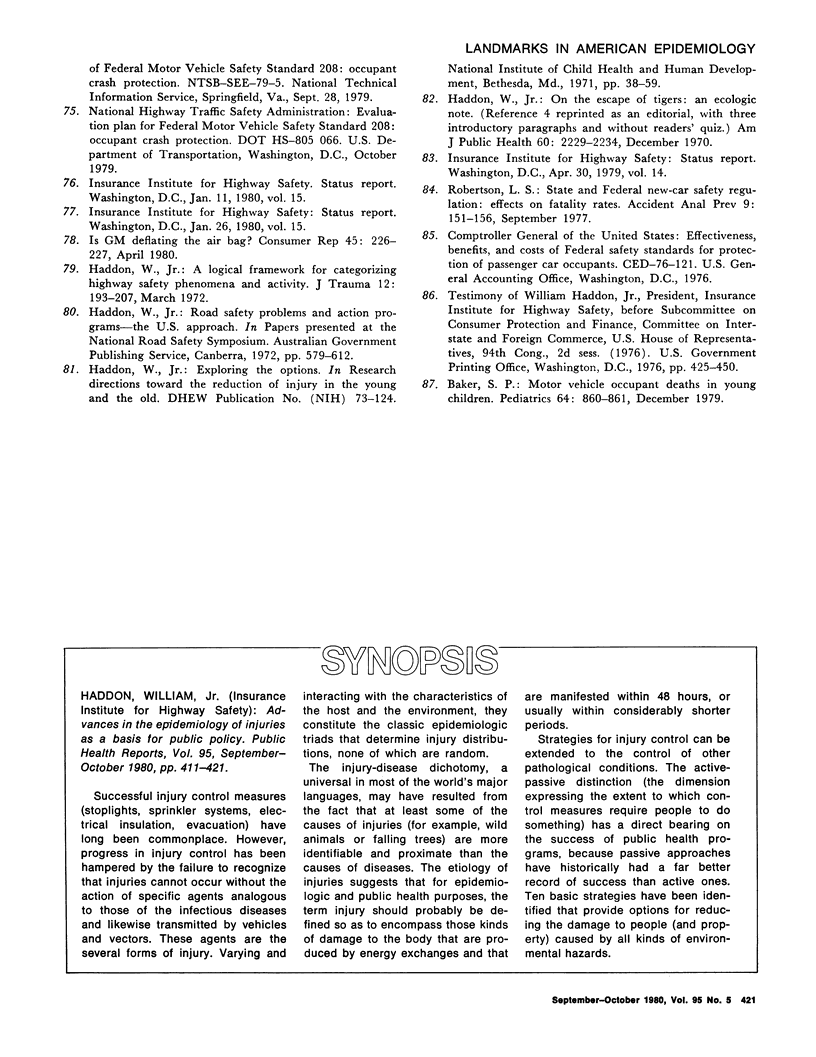
Selected References
These references are in PubMed. This may not be the complete list of references from this article.
- Baker S. P. Motor vehicle occupant deaths in young children. Pediatrics. 1979 Dec;64(6):860–861. [PubMed] [Google Scholar]
- Baker S. P. Prevention of childhood injuries. Med J Aust. 1980 May 17;1(10):466, 468-70. doi: 10.5694/j.1326-5377.1980.tb135040.x. [DOI] [PubMed] [Google Scholar]
- Barry P. Z. Individual versus community orientation in the prevention of injuries. Prev Med. 1975 Mar;4(1):47–56. doi: 10.1016/0091-7435(75)90053-5. [DOI] [PubMed] [Google Scholar]
- Fraser D. W., McDade J. E. Legionellosis. Sci Am. 1979 Oct;241(4):82–99. doi: 10.1038/scientificamerican1079-82. [DOI] [PubMed] [Google Scholar]
- GORDON J. E. The epidemiology of accidents. Am J Public Health Nations Health. 1949 Apr;39(4):504–515. doi: 10.2105/ajph.39.4.504. [DOI] [PMC free article] [PubMed] [Google Scholar]
- Gratz R. R. Accidental injury in childhood: a literature review on pediatric trauma. J Trauma. 1979 Aug;19(8):551–555. [PubMed] [Google Scholar]
- HADDON W., Jr A note concerning accident theory and research with special reference to motor vehicle accidents. Ann N Y Acad Sci. 1963 May 22;107:635–646. doi: 10.1111/j.1749-6632.1963.tb13307.x. [DOI] [PubMed] [Google Scholar]
- HASBROOK A. H. The historical development of the crash-impact engineering point of view. Clin Orthop. 1956;8:268–274. [PubMed] [Google Scholar]
- Haddon W., Jr A logical framework for categorizing highway safety phenomena and activity. J Trauma. 1972 Mar;12(3):193–207. doi: 10.1097/00005373-197203000-00002. [DOI] [PubMed] [Google Scholar]
- Haddon W., Jr Editorial: Perspective on a current public health controversy. Am J Public Health. 1975 Dec;65(12):1342–1344. doi: 10.2105/ajph.65.12.1342. [DOI] [PMC free article] [PubMed] [Google Scholar]
- Haddon W., Jr Editorial: Strategy in preventive medicine: passive vs. active apprroaches to reducing human wastage. J Trauma. 1974 Apr;14(4):353–354. [PubMed] [Google Scholar]
- Haddon W., Jr Energy damage and the ten countermeasure strategies. J Trauma. 1973 Apr;13(4):321–331. doi: 10.1097/00005373-197304000-00011. [DOI] [PubMed] [Google Scholar]
- Haddon W., Jr Options for the prevention of motor vehicle crash injury. Isr J Med Sci. 1980 Jan;16(1):45–65. [PubMed] [Google Scholar]
- Haddon W., Jr The changing approach to the epidemiology, prevention, and amelioration of trauma: the transition to approaches etiologically rather than descriptively based. Am J Public Health Nations Health. 1968 Aug;58(8):1431–1438. doi: 10.2105/ajph.58.8.1431. [DOI] [PMC free article] [PubMed] [Google Scholar]
- Henle W., Henle G., Lennette E. T. The Epstein-Barr virus. Sci Am. 1979 Jul;241(1):48–59. doi: 10.1038/scientificamerican0779-48. [DOI] [PubMed] [Google Scholar]
- McGAVRAN E. G. The community as the patient of public health. Tex State J Med. 1958 Oct;54(10):719–723. [PubMed] [Google Scholar]


